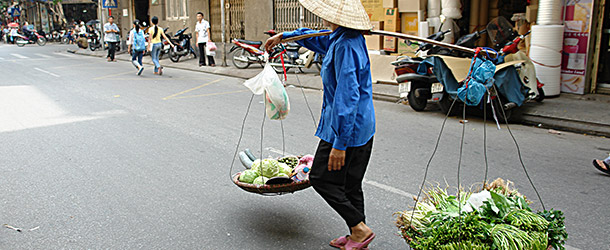The chairman of World Travel Holdings, Jeff Tolkin, recently travelled through the Far East. Below are his notes on some of the destinations he visited – remember to call your Cruise Concierge if you feel inspired to follow in his footsteps.
Angkor Wat
People go to Angkor Wat to see the temples. And they are spectacular. Built 900-1000 years ago, they are fantastic for their architecture and intricate carvings. Angkor Thom is wonderful in its grandeur, but is outdone by Angkor Wat. For both Angkor Wat and Ta Phrom (the temple that was reclaimed by the jungle and at which Angelina Jolie filmed Tomb Raider), we went early in the morning (5:15am) with our guide through back entrances. We had Angkor Wat to ourselves! As we exited the front of the temple, hundreds were lined up waiting to enter, no doubt wondering who we were and why we merited special treatment. Definitely worth a knowledgeable guide.
But Angkor Wat (known also as Siem Reap) is also interesting because it shows one the evil of man. From 1969-1998 communists ruled Cambodia. At first, communists backed by Vietnam and the Soviet Union took over. Then communism metastasised and Pol Pot, backed by China, took over. Added to this mix was U.S. bombing of eastern Cambodia in 1969-1971 to cut off the Ho Chi Minh Trail from North Vietnam to South Vietnam. Almost 2 million Cambodians, or roughly 20% of the population, died in these 30 years. And as you talk to Cambodians today, every one of them has a story about a loved one who died. So visit the War Museum, the Land Mine Museum, and the Killing Fields structure and display. But talk to the people – the wounds are still fresh enough to get first hand accounts.
Peace was established in 1998. But the same party has been in power for 17 years and the opposition is gaining strength. The next election is in 2018 and given there has never been a peaceful transition of power, if one wants to visit Cambodia, the time is now.
As to hotels, the 3 deluxe hotels are Amansara, Raffles, and Park Hyatt. Raffles it the oldest of the hotels and is right across from Amansara. Park Hyatt is right in the middle of town. All three are luxurious and tranquil. We stayed at Amansara, and were delighted to be expedited through immigration and customs. Not sure if the other hotels offer this service, but it saved us 45 minutes waiting in line. Also, the Amansara guides, as mentioned above, were terrific.
Hanoi
We stayed at the Sofitel Mertopole, which is the Grand Dame of Hanoi hotels. It is the place to stay and has no real competitor. It is located in the French Quarter, right across the street from the opera, and amidst the best shopping in Hanoi.
A one day tour of Hanoi is sufficient. See Ho Chi Minh’s tomb, his house where he lived, the Presidential Palace, old Hanoi, and for those who are interested, the Hanoi jail which housed American POW’s including former Presidential candidate John McCain. But be aware that most of the prison is dedicated to those Vietnamese who fought the French. And the parts devoted to the American POW’s are pure propaganda.
Meals in Hanoi were quite cheap. We ate at Ly Club, which was Vietnamese and quite good. It is right around the corner from the Sofitel. Nineteen 11, which is under the Opera House, was good but not great.
We spent a day driving 3 hours each way to Ha Long Bay and took a private 4 hour boat tour of the bay. The rock formations are quite nice.
We used Trails of Indochina as a ground operator. We found the guide, Ming Ho, quite good – knowledgeable and pleasant.
Hong Kong
We stayed at the W. It is perpendicular to Nathan Road vs the Peninsula and the Mandarin Oriental which are at the lower end of Nathan Road. The hotel is in a tall building (our room was on the 33rd floor and the fitness center is on 73). Modern chic, in keeping with W hotels. The breakfast was simply the best we have ever had. Every conceivable western and Asian food and all delicious.
We walked Nathan Road. We did see many bargains but went to Sams Tailor where I had shirts made in a day for $57 each. 95 Nathan Road, sign on the building. Very good quality and reasonably priced.
Hue and Da Nang
We docked in Chan May, midway between these two cities. Hue is the Imperial period capital of Vietnam. Those interested in history will enjoy the Imperial City, which is very similar to the Forbidden City in Beijing. It is a bit destroyed but the Vietnamese government is restoring it. We also saw a famous pagoda (interesting) and went to the market.
From Hue we darted south to Da Nang. This can only be done in a private car and for those who do not spend a lot of time in Hue and who are comfortable moving at a high speed. Da Nang is urbane, rebuilt, and worth visiting. China Beach, popular among American GI’s during the war for R&R, is now home to a string of resorts, including a Hyatt Regency. Marble Mountain was interesting, with marble shops offering good bargains across the street. In town we walked among markets and shops and it was clear that we could have spent more time in Da Nang.
Note: the government is widening the road between Da Nang and Hue and what is presently a two hour drive will be cut in almost half when they are done.
Ho Chi Minh City
Vibrant city with lots of western shops and Vietnamese wares. Lacquer, silks, and Vietnamese art are in abundance. Key sites are Reunification Hall (formerly the Presidential Palace), U.S. Embassy, War Remnants Museum (not kind to Americans), and Cu Chi Tunnels (where the Viet Cong lived and attacked right under the American air base). Main shopping is on Dong Khoi and Le Loi streets, emanating from Union Square. My spa was mediocre for the spa treatment, but the price ($10 for 30 minutes for a foot massage) made the disappointment less. Go to Khai Silk on Dong Khoi for good silk. And Can Nha Xq at 37 Dong Khoi for quality silk art. The best restaurant in the city is One Square at the Park Hyatt right off Union Square. Go to Ben Thanh market for Vietnamese goods. Benchmark 30% off asking price as to what the real price should be.
Koh Samui
Small Thai island. Not much to see or do. We went to Four Seasons resort. Magnificent. Very hilly (one needs to call a buggy to go anywhere) with rooms and villas on stilts built into the hills overlooking the sea, but the service on the beach was spectacular and was the spa. Highly recommended for clients who want to unwind, regenerate, and relax.
Sihanoukville
Sihanoukville is a small town in southern Cambodia. Those who went to the Ritz Carlton said it was lovely. Those who went to see the temples thought they were ok but nothing special.
Singapore
Singapore is an island city/state whose northern coast is so close to Malaysia that a good swimmer could swim it. The government controls the political aspects of life, but this is a capitalist nation. It is growing and, if the Chinese err in governing Hong Kong, could compete with Hong Kong in a big way. The entire island is meticulously clean, advanced, and functions quite well.
The city of Singapore is a marvel. Shopping that rivals Hong Kong (Orchard Rd is like Nathan Rd), modern gleaming hotels, and some interesting things to see and do. Among the hotels, on one end of the spectrum is the old Raffles Hotel, where the Singapore Sling was invented. It is worth a visit to the Long Bar, where you can order the Singapore Sling (or any other drink) and munch on complimentary peanuts, where it is expected you will throw the shells on the floor. Chicken satay was also quite good. On the other end is the Marina Sands, built by the owner of the Las Vegas Sands. An architectural wonder, it has three towers. Across the top is a connecting structure that looks a bit like a canoe. Up there is a pool surrounded by palm trees. In effect, it is a park in the sky. One of the most upscale shopping malls is adjacent (the Marina Mall), and there is a botanical garden within the complex too. Shopping can be overwhelming. We found the prices to be no great bargains, but Singapore has all the designer fashions, cutting edge electronics, and almost anything else one could want to buy.
Among the sites to see are the Changi Prison Museum. This complex is no longer on its original site as Singapore has renovated the original prison and uses it as a prison today. The site commemorates the internment of predominantly British, Aussie, and Kiwi soldiers during WWII, their heroics during that time, and the Japanese barbarism. We also found it interesting that a stretch of road going to Changi (which is also the name of the airport) is very straight and has three lanes in each direction. In the middle the well maintained plants are all in pots. This allows Singapore to use this stretch of highway as an emergency runway if the airport is ever out of commission. The botanical gardens are exquisite, and we are told that those who went to the zoo, particularly on the night tour, found it fascinating. In summary, we wish we had more time in Singapore and it is definitely worth at least a three night visit.




Comments: no replies